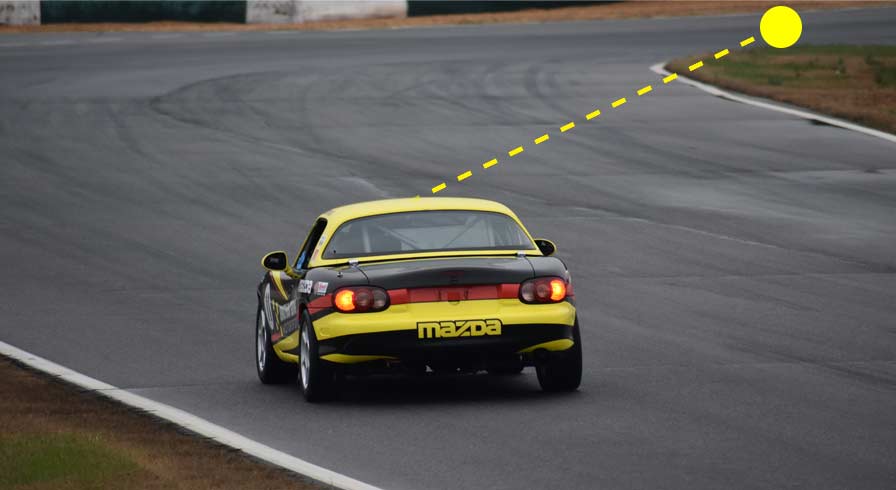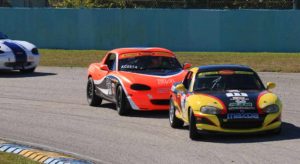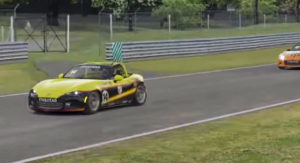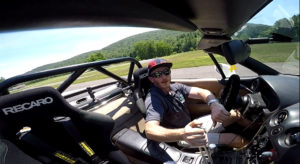If you’ve ever done a track day you’ve undoubtedly heard your instructor tell you to “look further ahead.” You’ve likely spent a lot of time working on this concept, and probably just began to understand the power of looking ahead and proper eye work.
But what does looking further ahead really mean? Is there really a way to define where you should look, and when to look there?
Yes, sort of. Let’s break things down.
The advantage of looking ahead on the race track is fairly simple and easy to understand. Looking further ahead provides you the ability to see things coming at you sooner. As a result, you have a better sense of speed and direction and you have a better idea of the trajectory you are taking through the turn.
You are driving less on reaction and more on pro-action. You’ll feel more relaxed and less on edge, typically driving a little safer and faster at the same time and with less effort by executing proper eye work.
Now let’s think about doing the opposite.
When we look super low, just over the hood of the car, we don’t see things coming until last minute. The perceived rate of speed is very high even though the actual speed is typically pretty low. The stress level of the driver is very high and the driver is driving on reaction, not pro-action.
Ever drive on a road with a bunch of potholes? Try avoiding those potholes with very low eyes, looking just over the hood of the car. You’ll notice that you’re swerving dramatically and last minute to avoid each individual pothole, a seemingly never-ending storm of dramatic inputs to the car.
However, when you drive on that same road but pick your eyes up toward the horizon, you will notice that you’ll find a line that is the best compromise of avoiding the potholes as a whole. Also, you will smooth your driving out significantly and experience less stress.
Looking further ahead is obviously preferable because it enables you to have a good Sight Picture.
Establishing A Good Sight Picture
Sight Picture – The screenshot of what your eyeballs are seeing.
Think of what your eyes see right at the turn-in to a corner. Image that this was an image, something like a camera would produce. More specifically, it’s combination of your focal point and peripheral vision that bring together what your brain sees.
By establishing a really solid sight picture, you are giving your brain the best imagery possible to best communicate to your hands and feet what inputs to make to the car.
The 1.5 Rule
What does looking ahead really mean, specifically? It’s difficult to communicate to someone exactly where you want them to look and when you want them to look there when coaching someone on eye work.
This is where I established the “1.5 Rule” rule. Basically, the driver should always be looking at least 1.5 reference “zones” (not points) ahead. Let me show you what that means.
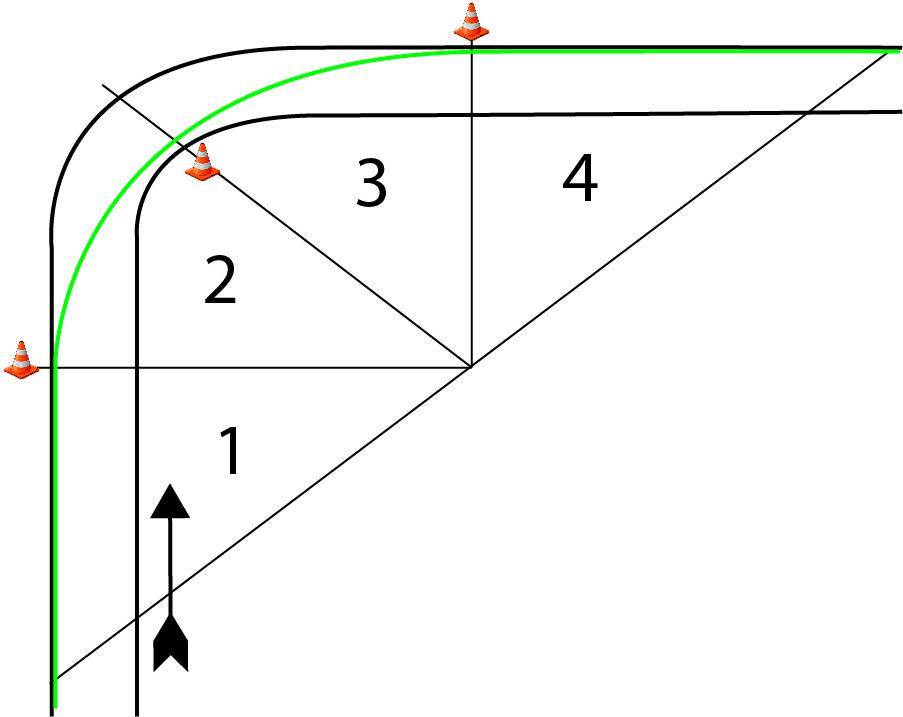
Let’s divide this 90 degree corner into 4 different sections. Quite simply, zones 1, 2 ,3 and 4. Each zone is the distance of 1 reference zone.
For example, Zone 2 of the corner is defined as the distance between the turn-in and apex. Whereas Zone 3 is defined by the distance between apex and exit.
The full length of any of these zones is considered “1 reference zone.”
A good starting point for any driver is to maintain an eye lead of at least 1.5 reference zones ahead of the car, on the pavement, on the intended path. That is, wherever the car currently is the driver will have his focal point at the distance of 1.5 reference zones ahead at all times.
In reality, the concept looks like this:
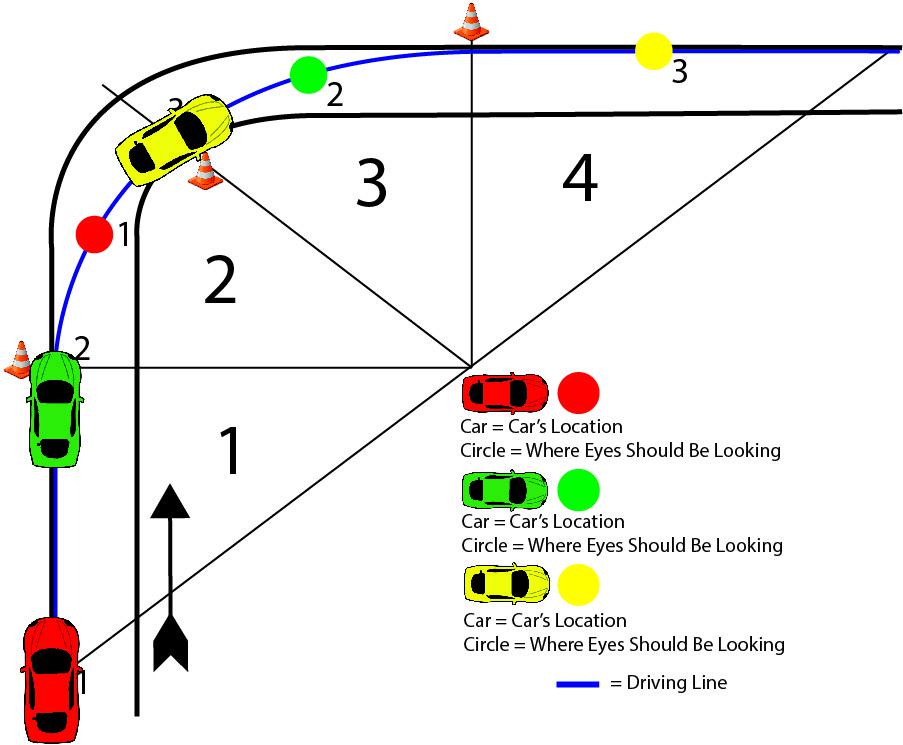
Setting your focal point at this spot at this time optimizes your hand eye coordination and gives you the best shot at landing the car exactly where you wanted to in the corner.
Furthermore, this encourages the driver to keep scanning his eyes ahead as opposed to focusing on one individual reference point for too long.
On the approach to the corner the eyes want to be on line, halfway between turn-in and apex. Once the car is at the turn-in, the eyes want to be on line, halfway between the apex and exit. Once the car is at the apex, the eyes want to be on line, looking all the way down the next straightaway.
This is how we implement the 1.5 rule, always keeping the eyes 1.5 reference zones in front of the car.
Now that you’ve seen this put to use in a 90 degree corner, download the Eye Work by Corner Type PDF guide below to see this method utilized in different common corner types.
FREE PDF GUIDE
EYE WORK BY CORNER TYPE
You’ll also receive updates and wisdom twice per month. Unsubscribe at any time. We’ll never share your information.
Why reference ZONES and not POINTS?
Cones are the most common, easy to find reference POINT there are. They can be great tools to identify reference POINTS around the track. Traditionally they’re placed at the turn-in, apex and exit of each corner.
Here’s the problem though.
We have to be careful that we don’t stare at the cone in front of us for too long before moving our eyes up again.
I see many drivers doing a great job of getting their eyes up, identifying the cone as their trajectory and successfully getting the car where they wanted. But they fail to get the eyes up AFTER that! They end up staring at the cone directly in front of them and then when they look up to the next reference there is a distinct swerve/input to the car. This is an easy trap to fall into.
Basically, they’re driving from one point, to another, to another and another.
They didn’t maintain an eye lead time of 1.5 reference zones. They may have done a great job of hitting the apex but aren’t prepared for the rest of the turn because their eyes are too low. The result is the driver driving point, to point, to point. Not a smooth trajectory.
Instead of thinking about the cones as reference POINTS, think of the cones as the framework that establish the reference ZONES. Then follow the 1.5 rule to improve your eye work.
If we’re able to follow the 1.5 rule it will be pretty difficult to make a mistake out on the race track due to low eyes. In fact, you’ll likely end up either driving faster or having your current speed feel slower.
Or both! Either way, it’s a win!
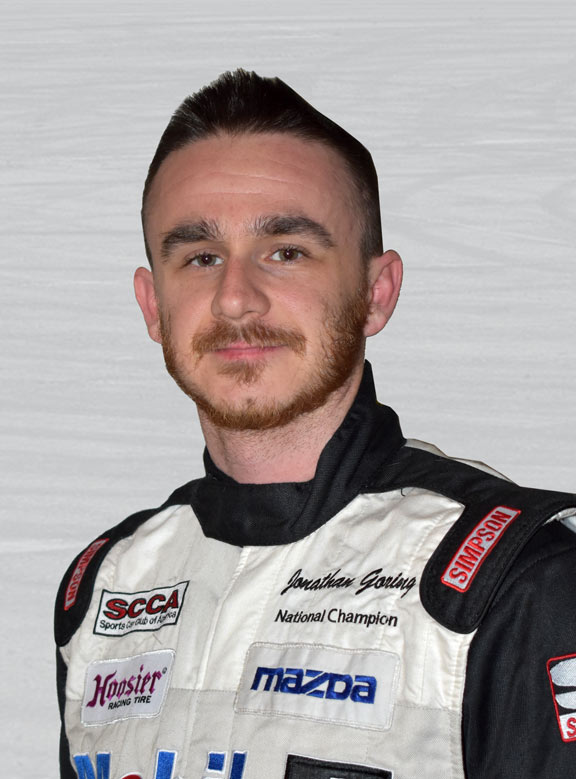
ABOUT THE AUTHOR
JONATHAN GORING
From 2006 Skip Barber National Champion to 2015 Spec Miata SCCA Runoffs Champion, and with the 2008 IMSA Lites title in between, I’ve been in the racing scene for quite some time. I’ve been fortunate to race against (and beat sometimes) the best drivers in the world currently racing in various top level motorsports.
I’m very passionate about the art/science of performance driving and want to share that passion with you.
WANT TO DRIVE FASTER THAN EVER?
Join my email list for monthly articles, driving tips, exclusive announcements on new things I’m working on and wisdom delivered straight to your inbox! You can unsubscribe at any time.

